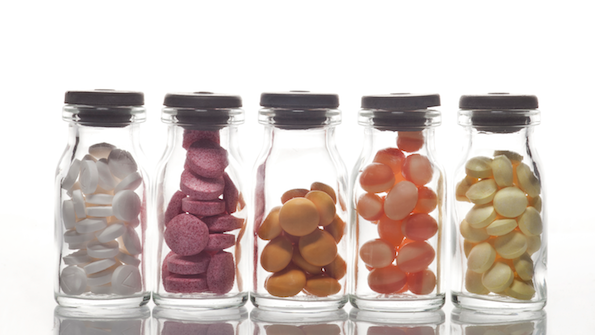A supplement label is designed to deliver a lot of information to retailers and consumers. But how do you know it's telling the truth? Here's a guide for retailers to understanding practices that preserve quality and label cues to look for.
September 14, 2014


Supplement labels are designed to deliver a lot of information to retailers and consumers, spanning ingredient information, dosage instructions and allergen details. And while graphics communicating GMO status and commitments to ingredient quality have also become prominent label features, a specter of doubt still exists among consumers and retailers who question whether they can trust the legitimacy of the promises made on ingredient labels. The big culprit at the heart of this mistrust is the lingering concern about ingredient adulteration – are the ingredients on the label really as potent and pure as the manufacturer says it is? In most cases, yes they are, due in big part to the increased manufacturing and legislatives oversights that govern the supplement industry.
Practices that preserve quality
Supplement manufacturers know that consumer trust hinges on trustworthy ingredients. They also know that adulteration can happen during any step of the ingredient sourcing and manufacturing process. That’s why most brands follow a rigorous system of checks and balances to ensure their ingredients maintain a high level of quality from the farm fields all the way through to the retail supplement shelf.
Ingredients are routinely tested at multiple stages of the production cycle – by raw ingredient suppliers before the ingredients are shipped to manufacturers, and by manufacturers when the ingredients arrive at the manufacturers’ facility and later at various stages during the manufacturing process. Validating the authenticity and potency of ingredients is accomplished using complex scientific equipment and laboratory analyses. Some manufacturers maintain their own in-house testing facilities, while others utilize the testing services of independent third-party laboratories. Some brands also work with third-party labs, often to secure an additional, objective confirmation of ingredient purity.

Supplements: How to know what’s on the label is in the bottle

This commitment to testing is also in keeping with U.S. Food and Drug Administration’s Good Manufacturing Practices (GMPs), which established stringent requirements for companies involved with dietary supplement manufacturing, packaging and labeling. GMPs stipulate that manufacturers must evaluate the identity, purity, quality, strength and composition of their dietary ingredients and dietary supplements to help ensure products are safe and accurately labeled.
The ripple effect of an untrustworthy product can reflect poorly on both the product manufacturer and the retail establishment that carries the product. That’s why conscientious retailers have become as proactive about verifying product quality as the product manufacturers themselves.
“Label claims are something we consider important because it reflects on us and our standards,” said John Pittari, founder and owner of Maine-based New Morning Natural Foods. “Any manufacturer that has a quality standard and a brand that they want to continue should know the source of their raw materials all the way through.”
Retailers must also be prepared to answer pointed questions about products. When retailers have access to product testing and quality information it makes that job much easier. Alan Lewis of Colorado-based Vitamin Cottage Natural Food Markets said his chain routinely completes extensive auditing of their suppliers’ sourcing, growing, formulating and manufacturing practices because if a consumer has a question, it makes the answer easier to find. “We can always find out in short order how and where it was made because we depend on responsible vendors,” he said. “Good manufacturing processes, food safety regulations and organic rules all require source verification.”
Label quality cues to look for
Smart phone technology has made access to product information very convenient, especially in the retail setting, with brand websites and information hotlines now routinely listed on product labels. But other label cues also offer insight into the quality of a product.
While dietary supplement companies are legally required to comply with GMPs, it’s hard to tell by looking at the label whether they’ve done so. Following are three third-party certification logos to look for that can help retailers and consumers know that the products met or exceeded certain quality requirements:
NSF: NSF International’s GMP Registration Program enables manufacturers to become independently registered by NSF to meet GMP requirements. The program is open not just to manufacturers of dietary supplements but also to manufacturers of ingredients and raw materials, as well as distribution, warehousing and packaging companies.
USP: U.S. Pharmacopeial Convention (USP) offers verification services for dietary supplements that covers finished products and ingredients. Verification requirements include GMP audits, product and ingredient testing and manufacturing documentation review.
NPA: The Natural Products Association was among the first organizations to offer a third-party GMP certification program for the manufacturing of dietary supplements and dietary ingredients. To maintain NPA GMP certification status, companies must be re-audited every two years.
About Sponsor Doctor’s Best
Doctor’s Best carries over 50 branded ingredients in its product line; all at clinically proven doses and the trademarked ingredient is displayed on the front panel of the bottle, instead of being relegated to a small portion of the back label.
QR code technology on Doctor’s Best packaging helps promote understanding within the retail environment. Using a mobile device, you and your customers can simply scan the code on the label and is taken not to a generic website as is typically done, but directly to a website about the product itself, including factual information about the ingredient, its benefits, and published scientific research. This approach is an extension of our label yet has enabled us to convey so much more about our products than a traditional label ever could.
You May Also Like


